geoscientificInformation
Type of resources
Available actions
Topics
INSPIRE themes
Keywords
Contact for the resource
Provided by
Formats
Representation types
Update frequencies
status
Scale
-
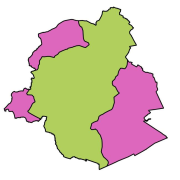
Brussels-Capital Region: map of areas likely to be flooded (future events). Prepared in accordance with Article 4 of the European Flood Directive 2007/60/EC.
-
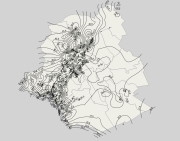
Brussels-Capital Region: thicknesses of the Stratigraphic Units of the Brussels-Capital Region (SU/BCR), excluding quaternary units and Paleozoic bedrock. Thicknesses (meters) are represented by contour lines spaced with a 2.5m pitch. Data is limited to the Brussels-Capital Region’s border extended with a 500 m buffer zone. These thicknesses were extracted from the BruStrati3D v1.1 geological model. This data is generated from models and may contain errors, inaccuracies and gaps. It has informative value and may under no circumstances replace a study carried out by an expert. Bruxelles Environnement cannot be held liable for the consequences of the use of this information.
-
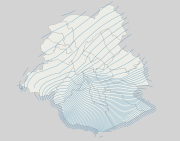
Brussels-Capital Region: piezometric maps (May 2013) for the following aquifer (and aquitard) hydrogeological units : - UH/RBC_1 Quaternary aquifer system: US/RBC_14 Silts, sands and alluvial gravels ; - UH/RBC_2 Perched sandy aquifer system (Diest Fm, Bolderberg Fm, Sint-Huibrechts-Hern Fm and Onderdale Member); - UH/RBC_4 Aquifer system of the Wemmel, Lede, Brussels and Vlierzele sands (or better known as the Bruxellian sands); - UH/RBC_6 Aquitard of Tielt sands and clays ; - UH/RBC_7 Kortrijk Sand and Clay Aquitard System (Moen Member); - UH/RBC_8 Aquifer of the Landénien sands. The piezometric levels (in m-DNG/TAW) are represented by piezometric lines separated by a 2m step. These data are limited to the borders of the Brussels-Capital Region extended by a 500m buffer zone. The piezometric maps of UH/RBC 1 to 7 are from Brussels Phreatic System Model v1.0 (BPSM v1.0) and that of UH/RBC 8 is from Hydroland v1.0. These two hydrogeological models were developed under FEFLOW 7.1 and 6.1 ® respectively. del. This data is generated from models and may contain errors, inaccuracies and gaps. It has informative value and may under no circumstances replace a study carried out by an expert. Bruxelles Environnement cannot be held liable for the consequences of the use of this information.
-
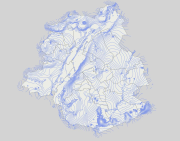
Brussels-Capital Region: Map of the absolute piezometric phreatic levels (May 2013) obtained with the combination of the piezometric levels of the following hydrogeological units of the Brussels phreatic system: - UH/RBC_1 Quaternary aquifer system: US/RBC_14 Silts, sands and alluvial gravels ; - UH/RBC_2 Perched sandy aquifer system (Diest Fm, Bolderberg Fm, Sint-Huibrechts-Hern Fm and Onderdale Member); - UH/RBC_4 Aquifer system of the Wemmel, Lede, Brussels and Vlierzele sands (or better known as the Bruxellian sands); - UH/RBC_6 Aquitard of Tielt sands and clays ; - UH/RBC_7 Kortrijk Sand and Clay Aquitard System (Moen Member); This map thus includes the absolute piezometric levels of the most superficial aquifer units, in order to map the level of the "piezometric groundwater surface". The piezometric levels (in m-DNG/TAW) are represented by level lines (isopiezes) separated by a 2m step. These data are limited to the borders of the Brussels-Capital Region extended by a 500m buffer zone. These data are extracted from the Brussels Phreatic System Model v1.0 (BPSM v1.0) hydrogeological model, developed under FEFLOW 7.1 ®. This data is generated from models and may contain errors, inaccuracies and gaps. It has informative value and may under no circumstances replace a study carried out by an expert. Bruxelles Environnement cannot be held liable for the consequences of the use of this information.
-
Brussels-Capital Region: The geotechnical maps of Brussels were elaborated by J.P. Dam, under the direction of prof. J. Nuyens, V. Roisin and R. Thonnard of the Université Libre de Bruxelles (ULB) and of the Vrije Universiteit Brussel (VUB), members of the Centre Interuniversitaire pour la Cartographie Géotechnique directed by J. Nuyens (ULB). They were then published at a scale of 1/5000 between 1976 and 1990 by the ‘Institut Géotechnique de l’Etat’ (State Geotechnical Institute). The constituent documents (maps and associated reports) provide an overview of the following points: - tests carried out in the region ; - depth of the water table ; - nature and position of the tertiary substratum ; - nature and strength of the various surface layers; - units with a specific overlay of the formations encountered. Their initial objective was to respond to the needs of the builders for synthetic and easily accessible documentation relating to the subsoil of the Brussels region. The plates and documents provided did not claim absolute precision because of the interpolations and extrapolations necessary for their establishment. The present archive is presented in three forms: - Digitized maps and associated FR/NL explanatory notes .pdf ; - Georeferenced 'raster' maps (lambert 72); - Vector' maps (lambert 72). List of available maps: 31.2.4; 31.2.6; 31.2.8; 31.3.1; 31.3.2; 31.3.3; 31.3.4; 31.3.5; 31.3.6; 31.3.7; 31.3.8; 31.4.7; 31.7.1; 31.7.2; 31.7.3.
-
Brussels-Capital Region : The geological model BRUSTRATI3D v1.1 is a set of raster files covering the Brussels-Capital Region. These files contain the roof elevations and the thicknesses of the Stratigraphic Units (SU/BCR) and the Digital Terrain Model (DTM) of the topographic surface used in this model. These rasters have a 10x10m resolution and their reference coordinate system is EPSG 31370 (Belgian Lambert 31370). The documentation relating to the construction oh these data is available at the following addresses (French only): BRUSTRATI3D v1.1 https://document.environnement.brussels/opac_css/index.php?lvl=notice_display&id=10965 BRUSTRATI3D v1.0 https://document.environnement.brussels/opac_css/index.php?lvl=notice_display&id=10964 As the data in this archive is model-based, it may contain errors, inaccuracies and gaps. They should be used with caution and critical thinking. They can in no way replace a field study carried out by an expert. In general, Brussels Environment and the Geological Survey of Belgium cannot, under any circumstances, be held responsible for any damage, direct or indirect, resulting from the use of these data or the impossibility of using them for any reason whatsoever.
-
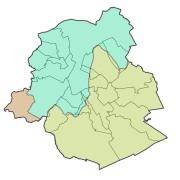
Brussels-Capital Region: Map of the areas affected by historical flooding (past events). Prepared in accordance with Article 4 of the European Flood Directive 2007/60/EC.
-
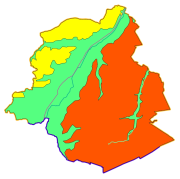
Brussels-Capital Region : data on the 5 Groundwaterbody of the Area of Brussels, defined under the Directive and the Ordinance Water : code European, code of Brussels and name of the water mass, hydrographic district
-
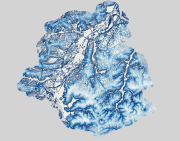
Brussels-Capital Region: map of the depth of the piezometric phreatic levels (May 2013) obtained with the combination of the piezometric levels of the following hydrogeological units of the Brussels phreatic system: - UH/RBC_1 Quaternary aquifer system: US/RBC_14 Silts, sands and alluvial gravels ; - UH/RBC_2 Perched sandy aquifer system (Diest Fm, Bolderberg Fm, Sint-Huibrechts-Hern Fm and Onderdale Member); - UH/RBC_4 Aquifer system of the Wemmel, Lede, Brussels and Vlierzele sands (or better known as the Bruxellian sands); - UH/RBC_6 Aquitard of Tielt sands and clays ; - UH/RBC_7 Kortrijk Sand and Clay Aquitard System (Moen Member); This map thus includes the relative piezometric levels of the most superficial aquifer units, in order to map the depth of the "piezometric groundwater surface". The piezometric levels (in metres from the topography) are represented by level lines (isobaths) separated by a 2m step. These data are limited to the borders of the Brussels-Capital Region extended by a 500m buffer zone. These data are extracted from the Brussels Phreatic System Model v1.0 (BPSM v1.0) hydrogeological model, developed under FEFLOW 7.1 ®. This data is generated from models and may contain errors, inaccuracies and gaps. It has informative value and may under no circumstances replace a study carried out by an expert. Bruxelles Environnement cannot be held liable for the consequences of the use of this information.
-
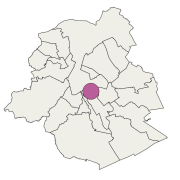
Brussels-Capital Region: Map indicating the entire Brussels-Capital Region for which a potentially significant flood risk exists or can be expected in the future. Prepared in accordance with Article 5 of the European Flood Directive 2007/60/EC.
 Geobru catalogue
Geobru catalogue